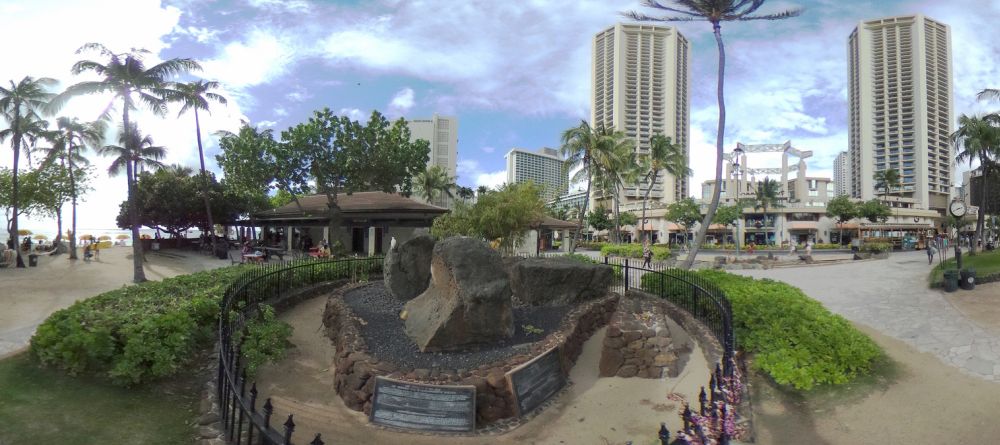
Nā Pōhaku Ola: The Legend of the Wizard Stones
If you’re out strolling Kalakaua Avenue along Waikiki Beach, as you no doubt will be some afternoon in between lunch and happy hour on your next visit to Oahu, you’ll no doubt stop at the Duke Kahanamoku statue to pose for a selfie or family photo with the Duke or drape a lei on his outstretched arms or around his neck. Maybe you want to pay homage to Hawaii’s most legendary waterman (not everyone is an Olympic gold-medal swimmer and the “father of modern surfing” after all), or maybe somebody told you leaving a lei means you’ll return to the Islands someday. Maybe it’s just good luck. You never know.
If you walk west along Kalakaua from the statue, you might notice what appears to be another sculpture – four basalt boulders arranged inside a circular iron fence – partly hidden by a row of bamboo next to the Waikiki police precinct office. Or, more likely, you won’t notice it. Like most people, you’ll walk right by the big rocks, on your way to rent a surfboard, get a snack at the Waikiki Beachside Bistro, use the public restrooms, or stroll down Kalakaua for a quick mai tai at Duke’s Waikiki before hitting the shops at the Royal Hawaiian Center, and not even realize they’re there. Don’t feel bad. Hardly anybody notices the Wizard Stones. Tourists aren’t stopping all day to take selfies with a pile of rocks. But if they knew their history and cultural significance, maybe they would.
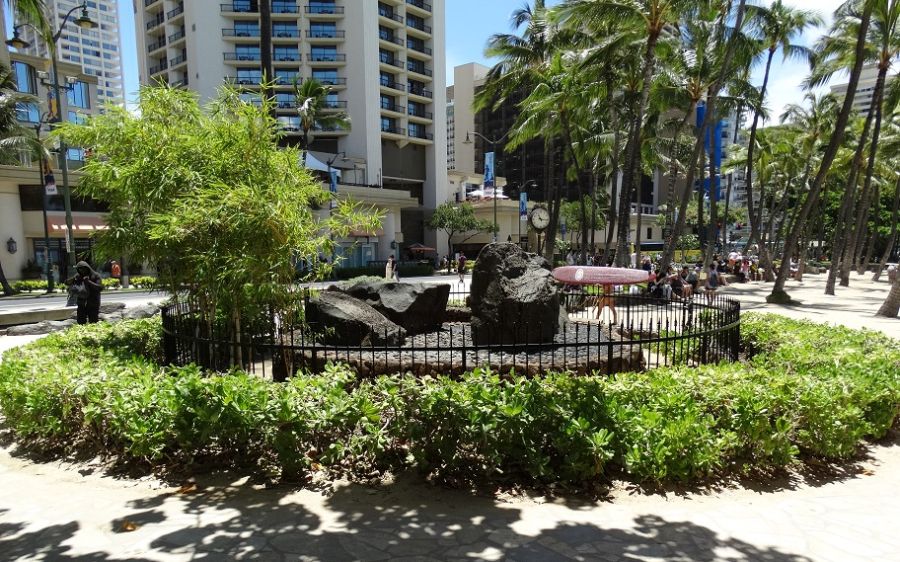
History of Wizard Stones
The four stones – which one visitor described as “the power spot of Waikiki” – are popularly known as the Wizard Stones. Although they’ve been renamed Nā Pōhaku Ola Kapaemāhū ā Kapuni (“the stones of life of Kapemahu and Kapuni”), the stones still have powerful mana. According to legend, the stones are the legacy of four spiritual healers who visited Hawaii around 400 AD. They came from Moa’ulanuiakea on the island of Raiatea, Tahiti, and took up residence at Ulukou, near where the Moana Surfrider Hotel now stands. During their stay, the Tahitian visitors practiced their spiritual arts, administering miraculous cures by laying of hands on the native Hawaiians who came to them to be healed, which gained them tremendous notoriety and prestige. When it came time for them to return to their homeland, they asked the Hawaiians to erect a monument to each of them – four large stones, two to be erected at their settlement at Ulukou, two at their favorite bathing place – so they and their spiritual prowess could be long remembered. At the instructions of the visitors, the locals selected four suitable rocks from the Kaimuki area and on the night of Kāne, thousands of locals gathered to carry the stones (which weighed several tons each) nearly two miles to Waikiki.
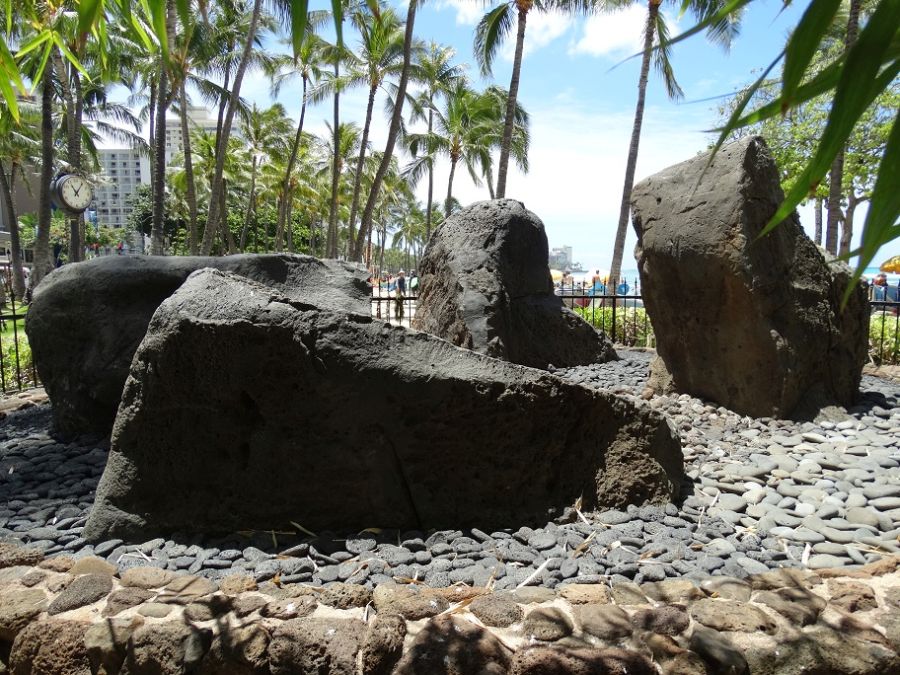
Kapaemahu, the chief of the healers, had his stone- the largest of the four, weighing in at 7.5 tons – named after him, and transferred his spiritual powers to the stone in an elaborate ceremony that was said to include the sacrificial offering of a “virtuous young chiefess” whose body was placed beneath the stone. The others likewise transferred their powers to the stones and then, after the ceremonial transfers of power – which included incantations, prayers, and fasting that lasted “one full moon” – they disappeared and were never seen again.
And then, for several hundred years, neither were the stones.
Rediscovery of the Stones of Life
In the early 1900s, the stones were rediscovered and resurrected near their current location with instructions that they never be moved. However, the stones were lost again after the property was sold and redeveloped, and ended up being used for the foundation of a bowling alley. The stones were rediscovered in the 1960s and moved to Kuhio Beach, then to their present location in 1997.
A delegation from Tahiti attended the dedication ceremony for the new permanent emplacement of the stones. They blessed the stones with wild basil and presented a small, dark stone from Tahiti – an offering they named Ta’ahu Ea (“the Life”) – that was set on top of an altar. The stones were encircled by healing plants – bamboo (ohe), wild tobacco (makahala), Hawaiian cotton (mao), and beach naupaka (naupaka kahakai) – to pay homage to their legendary healing powers.
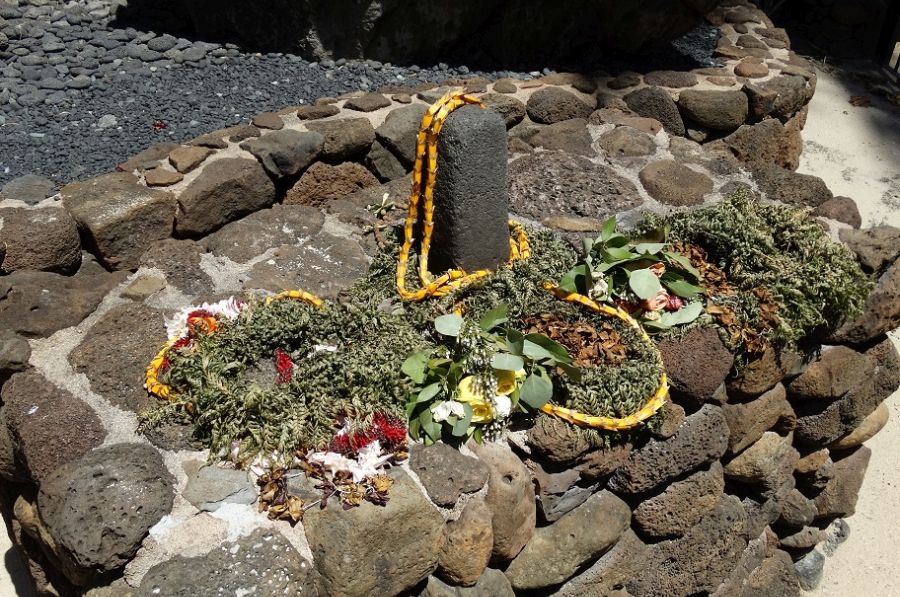
There are those who say Wizard Stones have retained the mana imbued in them by the esteemed Tahitian visitors over 1500 years ago. To this day, locals make offerings to the stones – the leis you find draped over the fence posts, flowers laid on the altar, even small stones tossed respectfully inside the sacred circle – in the hope the stones still have the power to provide good health and long life. Next time you visit Oahu and find yourself walking along Waikiki Beach, visit the Duke Kahanamoku statue, sure, but save a lei for the altar at Nā Pōhaku Ola. You never know.
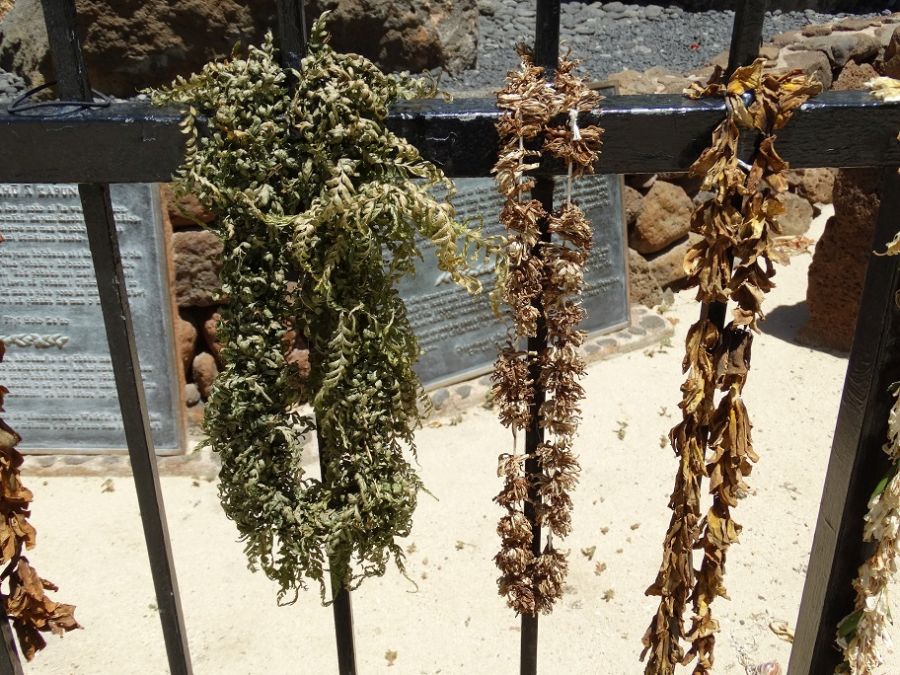
Reference: Boyd, Jas. H. “Tradition of the Wizard Stones Ka-Pae-Mahu, On the Waikiki Sea-Beach Premises of Hon. A. S. Cleghorn.” From All About Hawaii, Hawaiian Annual and Almanac for 1905 (pp. 139-141). Thrum, Thos. G. Thrum, Publisher, 1905.
Credits: Panorama header photo by Kaleomokuokanalu Chock; other photos by the author.







